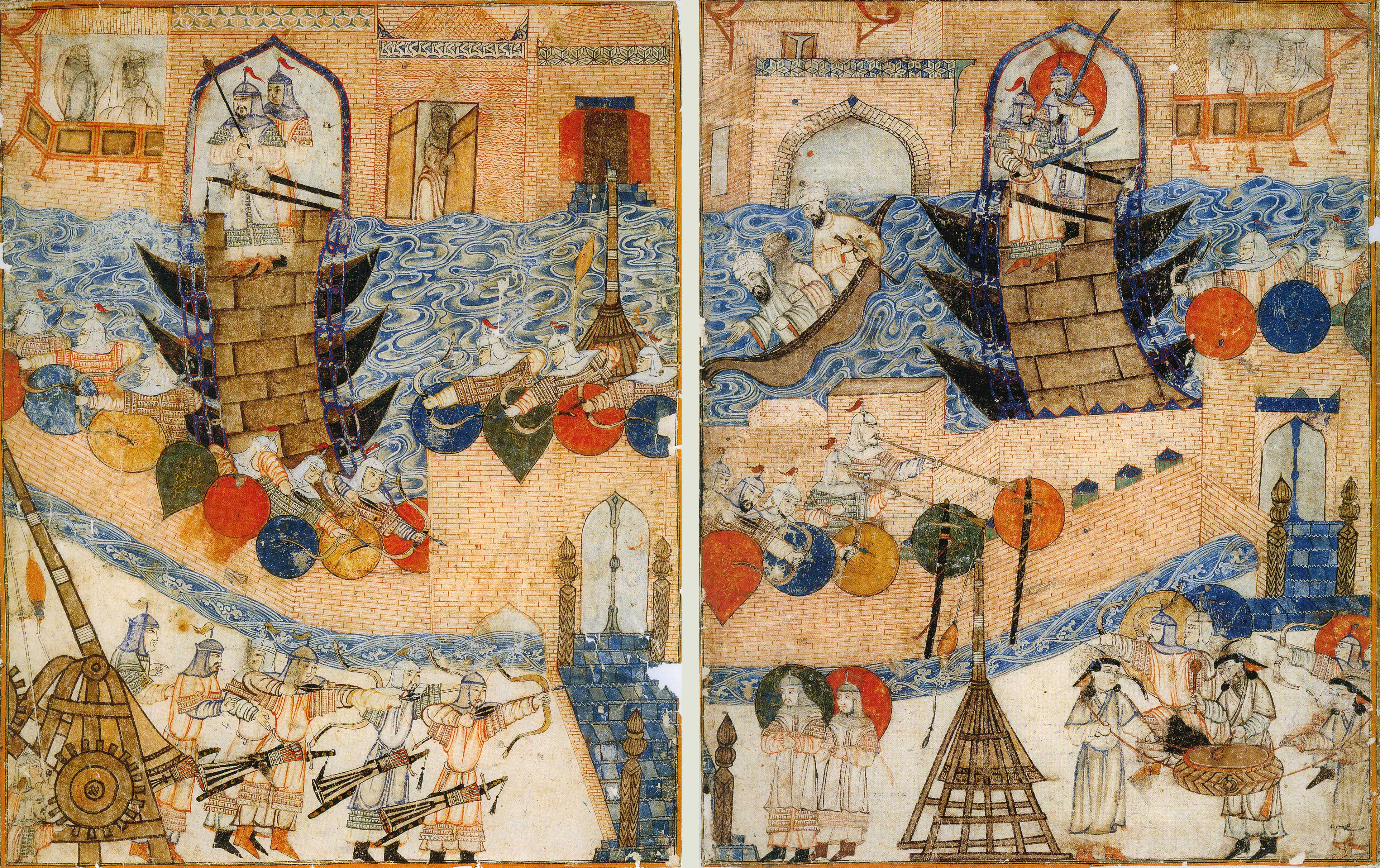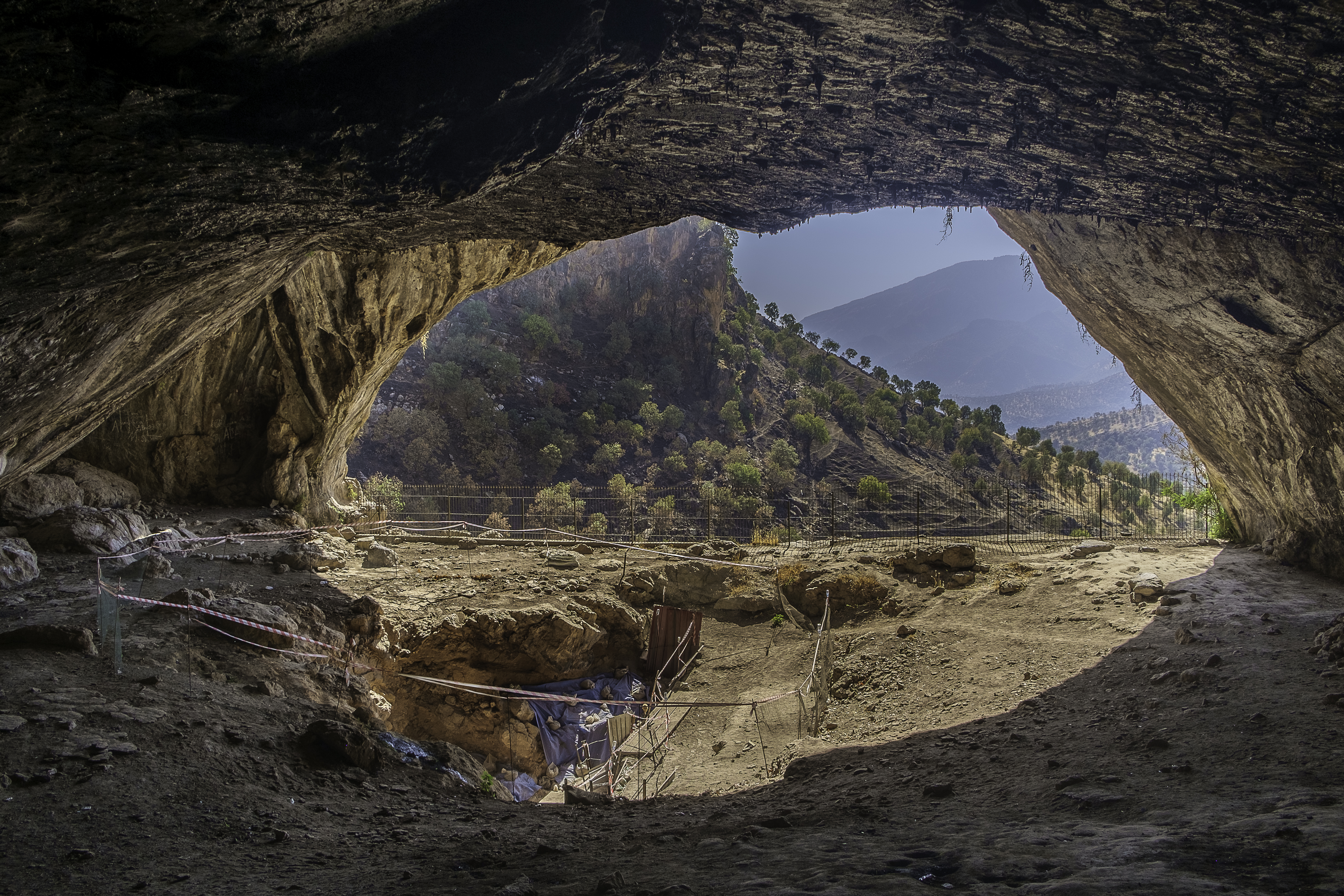|
Nil, Iraq
an-Nīl was a city of medieval Iraq, located at the modern site of Niliyah. It was founded by Al-Hajjaj ibn Yusuf, the Umayyad governor of Iraq, on the canal known as the Shatt en-Nil, which was named after the Nile The Nile, , Bohairic , lg, Kiira , Nobiin: Áman Dawū is a major north-flowing river in northeastern Africa. It flows into the Mediterranean Sea. The Nile is the longest river in Africa and has historically been considered the longest ... river. Both the canal and the city were built as part of a land reclamation project intended to increase the population of the area. In the late 10th century, the Christian bishopric of Nippur, 50 km to the southeast, was relocated to Nīl. Nīl survived the Mongol conquest of Iraq in 1258 and continued to flourish for nearly a century thereafter, even while most other settlements in the area declined. It appears to have been abandoned around 1350. The ruins at Niliyah show that medieval Nīl was a large city, wit ... [...More Info...] [...Related Items...] OR: [Wikipedia] [Google] [Baidu] |
Gibson - Late Abbasid Map Of Kish Area
Gibson may refer to: People * Gibson (surname) Businesses * Gibson Brands, Inc., an American manufacturer of guitars, other musical instruments, and audio equipment * Gibson Technology, and English automotive and motorsport company based * Gibson Appliance, a former American refrigerator manufacturer * Gibson Greetings, an American greeting cards brand * Gibson's Discount Center, a former American discount store chain * Gibson Manufacturing Corporation, a former American tractor and railroad speeder manufacturer Places Australia * Gibson, Western Australia, village * Gibson Desert, Western Australia Canada * Gibsons, town in British Columbia United States * Gibson, Arkansas * Gibson, Georgia * Gibson, Iowa * Gibson, Louisiana * Gibson, Mississippi * Gibson, Dunklin County, Missouri * Gibson, Pemiscot County, Missouri * Gibson, North Carolina * Gibson, Pennsylvania * Gibson, Tennessee * Gibson, Wisconsin * Gibson Amphitheatre, former indoor amphitheatre in Los Angeles, ... [...More Info...] [...Related Items...] OR: [Wikipedia] [Google] [Baidu] |
Iraq
Iraq,; ku, عێراق, translit=Êraq officially the Republic of Iraq, '; ku, کۆماری عێراق, translit=Komarî Êraq is a country in Western Asia. It is bordered by Turkey to Iraq–Turkey border, the north, Iran to Iran–Iraq border, the east, the Persian Gulf and Kuwait to the southeast, Saudi Arabia to the south, Jordan to Iraq–Jordan border, the southwest and Syria to Iraq–Syria border, the west. The Capital city, capital and largest city is Baghdad. Iraq is home to diverse ethnic groups including Iraqi Arabs, Kurds, Iraqi Turkmen, Turkmens, Assyrian people, Assyrians, Armenians in Iraq, Armenians, Yazidis, Mandaeans, Iranians in Iraq, Persians and Shabaks, Shabakis with similarly diverse Geography of Iraq, geography and Wildlife of Iraq, wildlife. The vast majority of the country's 44 million residents are Muslims – the notable other faiths are Christianity in Iraq, Christianity, Yazidism, Mandaeism, Yarsanism and Zoroastrianism. The official langu ... [...More Info...] [...Related Items...] OR: [Wikipedia] [Google] [Baidu] |
Al-Hajjaj Ibn Yusuf
Abu Muhammad al-Hajjaj ibn Yusuf ibn al-Hakam ibn Abi Aqil al-Thaqafi ( ar, أبو محمد الحجاج بن يوسف بن الحكم بن أبي عقيل الثقفي, Abū Muḥammad al-Ḥajjāj ibn Yūsuf ibn al-Ḥakam ibn Abī ʿAqīl al-Thaqafī; ), known simply as al-Hajjaj ibn Yusuf ( ar, الحجاج بن يوسف, al-Ḥajjāj ibn Yūsuf), was probably the most notable governor who served the Umayyad Caliphate. He began his service under Caliph Abd al-Malik (), who successively promoted him as the head of the caliph's (select troops), the governor of the Hejaz (western Arabia) in 692–694, and the practical viceroy of a unified Iraqi province and the eastern parts of the Caliphate in 694. Al-Hajjaj retained the last post under Abd al-Malik's son and successor al-Walid I (), whose decision-making was highly influenced by al-Hajjaj, until his death in 714. As governor of Iraq and the east, al-Hajjaj instituted key reforms. Among these were the minting of silver dirha ... [...More Info...] [...Related Items...] OR: [Wikipedia] [Google] [Baidu] |
Umayyad Dynasty
Umayyad dynasty ( ar, بَنُو أُمَيَّةَ, Banū Umayya, Sons of Umayya) or Umayyads ( ar, الأمويون, al-Umawiyyūn) were the ruling family of the Caliphate between 661 and 750 and later of Al-Andalus between 756 and 1031. In the pre-Islamic period, they were a prominent clan of the Meccan tribe of Quraysh, descended from Umayya ibn Abd Shams. Despite staunch opposition to the Islamic prophet Muhammad, the Umayyads embraced Islam before the latter's death in 632. Uthman, an early companion of Muhammad from the Umayyad clan, was the third Rashidun caliph, ruling in 644–656, while other members held various governorships. One of these governors, Mu'awiya I of Syria, opposed Caliph Ali in the First Muslim Civil War (656–661) and afterward founded the Umayyad Caliphate with its capital in Damascus. This marked the beginning of the Umayyad dynasty, the first hereditary dynasty in the history of Islam, and the only one to rule over the entire Islamic world ... [...More Info...] [...Related Items...] OR: [Wikipedia] [Google] [Baidu] |
Shatt En-Nil
The Shatt en-Nil Is a dry river bed/canal in southern Iraq. It is also known as the Naru Kabari. Called the Euphrates of Nippur, the river was an important irrigation and transport infrastructure for the city of Nippur during antiquity. The canal started just north of Babylon and travelled for 60 km ending at Larsa where it rejoined the Euphrates River. On the way it flowed through Nippur (32.55°N 44.42°E 34m). The canal also serviced the city of Tel Abib and Uruk. The canal is referred to in the so-called ''Murashu documents'' discovered at Nippur. which record business transaction in the area around Nippur.The river/canal has also been one of the rivers identified as the biblical River Chebar.(כְּבָר Map of Iraq showing Shatt en-Nil {{coord missing, Iraq Iraq Iraq,; ku, عێراق, translit=Êraq officially the Republic of Iraq, '; ku, کۆماری عێراق, translit=Komarî Êraq is a country in Western Asia. It is bordered by Turkey to Iraq–Turkey b ... [...More Info...] [...Related Items...] OR: [Wikipedia] [Google] [Baidu] |
Nile
The Nile, , Bohairic , lg, Kiira , Nobiin language, Nobiin: Áman Dawū is a major north-flowing river in northeastern Africa. It flows into the Mediterranean Sea. The Nile is the longest river in Africa and has historically been considered the List of rivers by length, longest river in the world, though this has been contested by research suggesting that the Amazon River is slightly longer.Amazon Longer Than Nile River, Scientists Say Of the world's major rivers, the Nile is one of the smallest, as measured by annual flow in cubic metres of water. About long, its drainage basin covers eleven countries: the Democratic Republic of the Congo, Tanzania, Burundi, Rwanda, Uganda, Kenya, Ethiopia, Erit ... [...More Info...] [...Related Items...] OR: [Wikipedia] [Google] [Baidu] |
Nippur
Nippur (Sumerian: ''Nibru'', often logographically recorded as , EN.LÍLKI, "Enlil City;"The Cambridge Ancient History: Prolegomena & Prehistory': Vol. 1, Part 1. Accessed 15 Dec 2010. Akkadian: ''Nibbur'') was an ancient Sumerian city. It was the special seat of the worship of the Sumerian god Enlil, the "Lord Wind", ruler of the cosmos, subject to An (mythology), An alone. Nippur was located in modern Nuffar in Afak District, Afak, Al-Qādisiyyah Governorate, Iraq (roughly 200 km south of Baghdad). Occupation at the site extended back to the Uruk period, the Ubaid period, and the Jemdet Nasr period. History Nippur never enjoyed political hegemony in its own right, but its control was crucial, as it was considered capable of conferring the overall "kingship" on monarchs from other city-states. It was distinctively a sacred city, important from the possession of the famous Ekur temple of Enlil. Ninurta also had his main Cult (religious practice), cult center, the E (temple), E ... [...More Info...] [...Related Items...] OR: [Wikipedia] [Google] [Baidu] |
Mongol Conquest Of Baghdad
The siege of Baghdad was a siege that took place in Baghdad in 1258, lasting for 13 days from January 29, 1258 until February 10, 1258. The siege, laid by Ilkhanate Mongol forces and allied troops, involved the investment, capture, and sack of Baghdad, which was the capital of the Abbasid Caliphate at that time. The Mongols were under the command of Hulagu Khan, brother of the khagan Möngke Khan, who had intended to further extend his rule into Mesopotamia but not to directly overthrow the Caliphate. Möngke, however, had instructed Hulagu to attack Baghdad if the Caliph Al-Musta'sim refused Mongol demands for his continued submission to the khagan and the payment of tribute in the form of military support for Mongol forces in Persia. Hulagu began his campaign in Persia against the strongholds of Nizari Ismailis, who lost their stronghold of Alamut. He then marched on Baghdad, demanding that Al-Musta'sim accede to the terms imposed by Möngke on the Abbasids. Althou ... [...More Info...] [...Related Items...] OR: [Wikipedia] [Google] [Baidu] |
Medieval Iraq
Iraq is a country in Western Asia that largely corresponds with the territory of ancient Mesopotamia. The history of Mesopotamia extends from the Lower Paleolithic period until the establishment of the Caliphate in the late 7th century AD, after which the region came to be known as Iraq. Encompassed within Iraqi territory is the ancient land of Sumer, which came into being between 6,000 and 5,000 BC during the Neolithic Ubaid period of Mesopotamian history, and is widely considered the oldest civilization in recorded history. It is also the historic center of the Akkadian, Neo-Sumerian, Babylonian, Neo-Assyrian, and Neo-Babylonian empires, a succession of local ruling dynasties that reigned over Mesopotamia and various other regions of the Ancient Near East during the Bronze and Iron Ages. Iraq during antiquity witnessed some of the world's earliest writing, literature, sciences, mathematics, laws and philosophies; hence its common epithet, the Cradle of Civilization. Th ... [...More Info...] [...Related Items...] OR: [Wikipedia] [Google] [Baidu] |
Former Populated Places In Iraq
A former is an object, such as a template, gauge or cutting die, which is used to form something such as a boat's hull. Typically, a former gives shape to a structure that may have complex curvature. A former may become an integral part of the finished structure, as in an aircraft fuselage, or it may be removable, being using in the construction process and then discarded or re-used. Aircraft formers Formers are used in the construction of aircraft fuselage, of which a typical fuselage has a series from the nose to the empennage, typically perpendicular to the longitudinal axis of the aircraft. The primary purpose of formers is to establish the shape of the fuselage and reduce the column length of stringers to prevent instability. Formers are typically attached to longerons, which support the skin of the aircraft. The "former-and-longeron" technique (also called stations and stringers) was adopted from boat construction, and was typical of light aircraft built until the ... [...More Info...] [...Related Items...] OR: [Wikipedia] [Google] [Baidu] |




